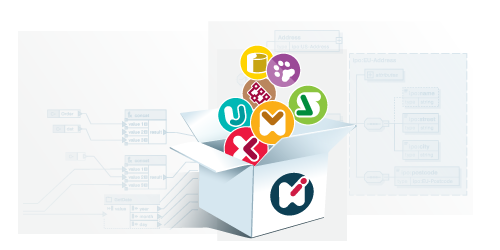XMLSpy is available separately or as part of the MissionKit product bundle.
Altova MissionKit is a software development suite of enterprise-class XML, JSON, SQL, and UML tools for information architects and application developers that includes MapForce, StyleVision, DiffDog, and other award winning tools in addition to XMLSpy.
All tools in the MissionKit share a similar user interface and design philosophy, which reduces the learning curve and enhances productivity. XMLSpy users benefit from a familiar environment when switching between different tasks and tools.
Synergy among Altova MissionKit tools means you'll not only save development time, but save on your bottom line, as well. Instead of making individual product purchases, you can choose MissionKit to get 7 products for less than the price of 2.
The tight integration of products in the Altova MissionKit enhances the functionality and usability of XMLSpy. Users benefit from a seamless workflow across different tasks such as data mapping and ETL, business report design, UML modeling, and more. For instance:
- MapForce integration: Users can save data mapping projects created in MapForce within an XMLSpy project for easy organization. This enables seamless XML data transformations and mappings without switching between applications. Likewise, XML and JSON content used in MapForce data integration projects can be opened, viewed, and edited in XMLSpy with a single click. Users can also take advantage of MapForce to generate XML in XMLSpy based on a database, EDI, Excel, etc.
- StyleVision integration: XMLSpy users can design XSLT stylesheets and advanced business reports in StyleVision and apply them directly within XMLSpy. This allows for instant visualization and testing of XML transformations. Likewise, users can instantly begin a StyleVision report design project based on the active DTD or XSD in XMLSpy.
Global resources can also be shared among MissionKit products.




